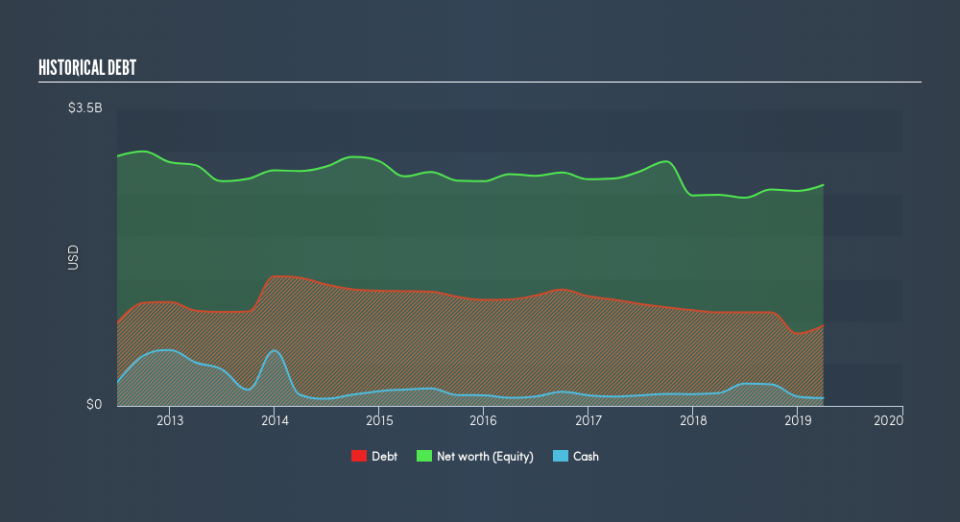Is Domtar Corporation (NYSE:UFS) As Strong As Its Balance Sheet Indicates?

Small-cap and large-cap companies receive a lot of attention from investors, but mid-cap stocks like Domtar Corporation (NYSE:UFS), with a market cap of US$2.8b, are often out of the spotlight. Surprisingly though, when accounted for risk, mid-caps have delivered better returns compared to the two other categories of stocks. Let’s take a look at UFS’s debt concentration and assess their financial liquidity to get an idea of their ability to fund strategic acquisitions and grow through cyclical pressures. Remember this is a very top-level look that focuses exclusively on financial health, so I recommend a deeper analysis into UFS here.
Want to participate in a short research study? Help shape the future of investing tools and you could win a $250 gift card!
See our latest analysis for Domtar
Does UFS Produce Much Cash Relative To Its Debt?
UFS has shrunk its total debt levels in the last twelve months, from US$1.1b to US$947m , which includes long-term debt. With this debt repayment, the current cash and short-term investment levels stands at US$94m , ready to be used for running the business. Additionally, UFS has generated cash from operations of US$519m in the last twelve months, leading to an operating cash to total debt ratio of 55%, indicating that UFS’s operating cash is sufficient to cover its debt.
Can UFS pay its short-term liabilities?
At the current liabilities level of US$753m, the company has maintained a safe level of current assets to meet its obligations, with the current ratio last standing at 2.19x. The current ratio is calculated by dividing current assets by current liabilities. Usually, for Forestry companies, this is a suitable ratio since there's a sufficient cash cushion without leaving too much capital idle or in low-earning investments.
Does UFS face the risk of succumbing to its debt-load?
UFS’s level of debt is appropriate relative to its total equity, at 36%. UFS is not taking on too much debt commitment, which can be restrictive and risky for equity-holders. We can test if UFS’s debt levels are sustainable by measuring interest payments against earnings of a company. Ideally, earnings before interest and tax (EBIT) should cover net interest by at least three times. For UFS, the ratio of 8.19x suggests that interest is appropriately covered, which means that debtors may be willing to loan the company more money, giving UFS ample headroom to grow its debt facilities.
Next Steps:
UFS has demonstrated its ability to generate sufficient levels of cash flow, while its debt hovers at an appropriate level. In addition to this, the company exhibits an ability to meet its near term obligations should an adverse event occur. I admit this is a fairly basic analysis for UFS's financial health. Other important fundamentals need to be considered alongside. I recommend you continue to research Domtar to get a better picture of the stock by looking at:
Future Outlook: What are well-informed industry analysts predicting for UFS’s future growth? Take a look at our free research report of analyst consensus for UFS’s outlook.
Valuation: What is UFS worth today? Is the stock undervalued, even when its growth outlook is factored into its intrinsic value? The intrinsic value infographic in our free research report helps visualize whether UFS is currently mispriced by the market.
Other High-Performing Stocks: Are there other stocks that provide better prospects with proven track records? Explore our free list of these great stocks here.
We aim to bring you long-term focused research analysis driven by fundamental data. Note that our analysis may not factor in the latest price-sensitive company announcements or qualitative material.
If you spot an error that warrants correction, please contact the editor at editorial-team@simplywallst.com. This article by Simply Wall St is general in nature. It does not constitute a recommendation to buy or sell any stock, and does not take account of your objectives, or your financial situation. Simply Wall St has no position in the stocks mentioned. Thank you for reading.

